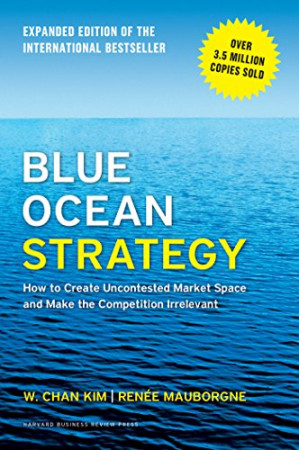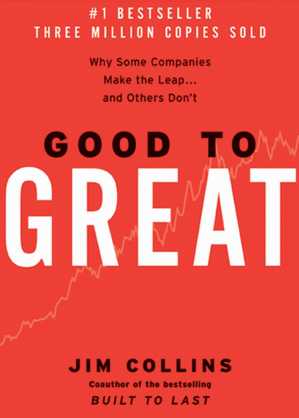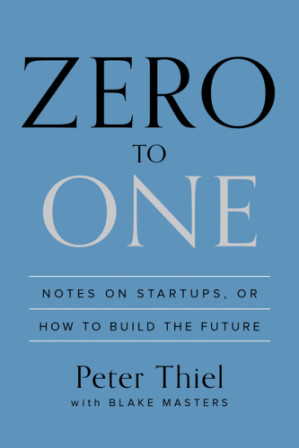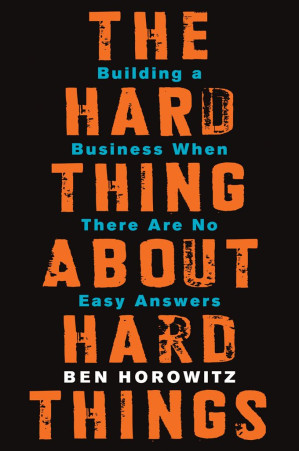Shift from red oceans to blue oceans by reconstructing market boundaries.
Cirque du Soleil created a blue ocean by eliminating animals and star performers while adding artistic themes and multiple productions.

Book summary
by W. Chan Kim & Renée Mauborgne
How to create new market space and make the competition irrelevant
Create uncontested market space and make competition irrelevant
Topics
Read this book as a strategic toolkit rather than just theory. Use Readever to highlight the systematic frameworks like the ERRC Grid and Four Actions Framework. After each chapter, use the AI to apply these tools to your current business challenges and track how you can reconstruct market boundaries in your industry. Focus on identifying non-customers and creating new value propositions that make competition irrelevant.
Things to know before reading
Blue Ocean Strategy presents a revolutionary approach to business strategy that challenges companies to stop competing in overcrowded "red oceans" and instead create new, uncontested market spaces called "blue oceans." Based on a decade of research across 150 strategic moves spanning more than 30 industries, the book provides systematic frameworks for achieving value innovation—simultaneously pursuing differentiation and low cost.
Blue Ocean Strategy provides systematic frameworks to escape bloody competition and create new market space.
Cirque du Soleil created a blue ocean by eliminating animals and star performers while adding artistic themes and multiple productions.
Southwest Airlines eliminated meals, assigned seating, and hub connections while raising point-to-point convenience and friendly service.
[yellow tail] wine simplified wine selection and created social accessibility while eliminating aging qualities and vineyard prestige.
Ready to continue? Launch the Readever reader and keep turning pages without paying a cent.

Clayton M. Christensen
Why great companies fail when faced with disruptive technologies

Jim Collins
How good companies become great through disciplined people and thought

Eric Ries
Build successful businesses through continuous innovation and validated learning
This summary gives you the complete Blue Ocean Strategy toolkit to systematically identify and capture new market spaces. You'll learn how to break free from industry conventions, reconstruct market boundaries, and create demand that makes your competition irrelevant. The frameworks work for startups and established companies alike.
Key idea 1
Cirque du Soleil created a blue ocean by eliminating animals and star performers while adding artistic themes and multiple productions.
The core distinction between red oceans (existing markets with intense competition) and blue oceans (untapped market spaces with no competition) forms the foundation of the strategy. Companies can systematically reconstruct market boundaries by looking across alternative industries, strategic groups, buyer groups, complementary offerings, functional-emotional appeal, and time. This approach helped Cirque du Soleil reinvent the circus industry by combining theater with circus arts, creating a new entertainment category.
Remember
Key idea 2
Southwest Airlines eliminated meals, assigned seating, and hub connections while raising point-to-point convenience and friendly service.
Value innovation—the simultaneous pursuit of differentiation and low cost—is achieved through the Eliminate-Reduce-Raise-Create (ERRC) Grid. This framework forces companies to systematically question industry conventions: eliminate factors the industry takes for granted, reduce factors below industry standards, raise factors above industry standards, and create factors the industry has never offered. Southwest Airlines used this approach to create a new airline model that competed with car travel rather than other airlines.
Remember
Key idea 3
[yellow tail] wine simplified wine selection and created social accessibility while eliminating aging qualities and vineyard prestige.
The Four Actions Framework provides a systematic approach to building a new value curve: eliminate factors that are no longer valued, reduce overdesigned features, raise elements that deliver breakthrough value, and create new sources of value. [yellow tail] wine used this framework to make wine accessible to non-wine drinkers by simplifying selection, using fun branding, and creating social occasions for wine consumption, capturing the U.S. market in just two years.
Remember
Blue Ocean Strategy is a groundbreaking business strategy book that challenges the conventional wisdom of competing in existing market spaces. Based on extensive research of companies across diverse industries, the book demonstrates how organizations can systematically create and capture new market space—"blue oceans"—rather than fighting over shrinking profit margins in crowded "red oceans."
The book introduces practical frameworks like the Strategy Canvas, Four Actions Framework, and ERRC Grid that help companies reconstruct market boundaries, focus on value innovation, and build execution into strategy. Through compelling case studies like Cirque du Soleil, Southwest Airlines, and [yellow tail] wine, the authors show how companies can make competition irrelevant by creating new demand and breaking the value-cost tradeoff.
Open Readever's reader to highlight passages, ask the AI companion questions, and keep exploring without paying a cent.
Blue Ocean Strategy represents one of the most influential business strategy frameworks of the 21st century. The book's strength lies in its systematic approach to innovation—providing concrete tools rather than abstract concepts. The ERRC Grid and Four Actions Framework give companies a practical methodology for challenging industry conventions and discovering new market opportunities.
Critical Reception: The book has sold over 4 million copies worldwide and has been translated into 47 languages. It was named a Wall Street Journal and BusinessWeek bestseller and won the Thinkers50 2011 Strategy Award for Best Business Book. The framework has been adopted by companies, governments, and non-profits globally, with the Harvard Business Review article preceding the book becoming one of the most reprinted articles in HBR history.
Entrepreneurs and startups looking to create new market categories
Established companies seeking growth beyond traditional competition
Business leaders and strategists responsible for innovation
Product managers and marketers developing new value propositions
Anyone interested in systematic approaches to business innovation
W. Chan Kim and Renée Mauborgne are Professors of Strategy at INSEAD and Co-Directors of the INSEAD Blue Ocean Strategy Institute. They are ranked among the world's most influential management thinkers and have published numerous articles in top academic journals including Harvard Business Review, where their article "Blue Ocean Strategy" is one of the most reprinted in the journal's history.
Kim and Mauborgne have received numerous academic awards including the Nobels Colloquia Prize for Leadership on Business and Economic Thinking, the Eldridge Haynes Prize for the best original article in The Academy of Management Executive, and the McKinsey Award for the best article published in Harvard Business Review. Their research has been featured in major publications worldwide and they serve as advisors to corporations and governments globally.

Peter Thiel
Create monopolies by building unique solutions for new markets

Michael E. Gerber
Transform from technician to entrepreneur by building systems, not just working

Ben Horowitz
Practical wisdom for navigating the toughest challenges in building companies
Build your personalized reading stack
Download full-length ePubs in one click with personal cloud storage.
Blend AI-guided insights with tactile note-taking to accelerate reflection.
Follow curated reading journeys tailored to your goals and time budget.
Sync highlights across devices so lessons stick beyond the page.
Sign in to Readever to keep reading with AI guidance, instant summaries, and synced notes.
Blue Ocean Strategy provides a systematic approach to escaping bloody competition and creating new market space. By focusing on value innovation rather than competitive benchmarking, companies can break free from industry conventions and create demand that makes competition irrelevant. The frameworks presented—from the Strategy Canvas to the ERRC Grid—offer practical tools for any organization seeking sustainable growth through market creation rather than market share battles.
This extended outline captures Blue Ocean Strategy's key insights and practical applications. Use it to revisit the book's core concepts and apply them to your personal or professional growth.
The book's enduring value lies in its systematic approach to innovation—providing concrete frameworks rather than abstract concepts. The ERRC Grid, Four Actions Framework, and Strategy Canvas give organizations of all sizes practical tools for escaping competitive markets and creating new demand.
Start reading Blue Ocean Strategy for free and unlock personalized book journeys with Readever.